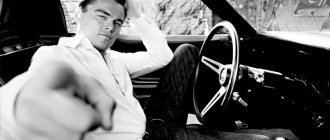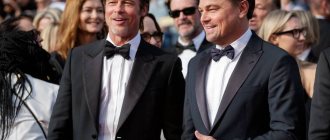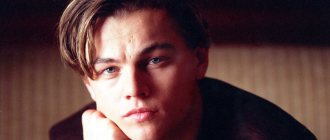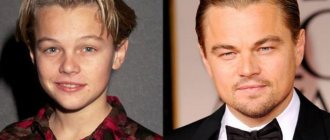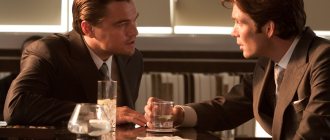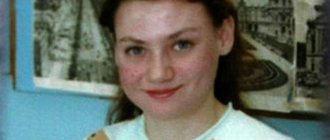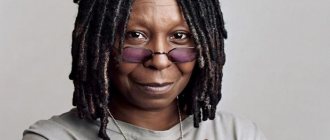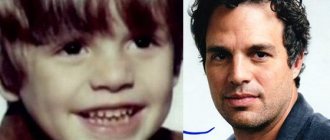The most extraordinary genius in the entire history of mankind. During his life history, he managed to lay the foundation of modern botany, anatomy, architecture, engineering, without being any of them. The flight of his thoughts was ahead of his time by many centuries. His paintings were and remain unique and mystically attractive. He was perhaps the first consistent realist in painting. Perhaps his observations of nature and research were the reason for his incredible detail and accuracy.
Childhood
On April 15, 1452, the greatest artist and scientist Leonardo da Vinci was born in Vinci, a Tuscan village. Mystery enveloped him from the first days of his existence. Being the illegitimate offspring of the young legal representative Piero da Vinci and the unknown peasant woman Katerina. His father, being from a noble family, later remarried a noblewoman, but the marriage was childless. After some time, upset by this, he created a new family with another wife. After all the marriages, there were 11 children in Pierrot's family. In his youth, the future genius was distinguished from his peers by his well-built body, extraordinary attractiveness and knowledge-hungry mind. Even then, his unusual attitude to the world and perception of his surroundings from a different perspective was noticeable. He spent a lot of his free time outdoors exploring his environment.
Leonardo da Vinci: 20 educational facts
Alleged self-portrait of Leonardo da Vinci and "Vitruvian Man"
1. Leonardo da Vinci was born on April 15, 1452 in the village of Anchiano, a suburb of the town of Vinci, which is located in the vicinity of Florence, Italy. The house where he was born is now a museum. [1]
2. Leonardo did not have a surname in the modern sense; "da Vinci" simply means "(originally) from the town of Vinci." His full name is Leonardo di ser Piero da Vinci, that is, “Leonardo, son of Mr. Piero from Vinci.” [1]
The house where Leonardo lived as a child
3. Leonardo's parents were 25-year-old notary Piero and peasant woman Katerina. Leonardo spent the first years of his life with his mother. His father soon married a rich and noble girl, but this marriage turned out to be childless, and Piero took his three-year-old son to be raised. [1]
4. In his youth, Leonardo began to study many subjects, but, having started, then abandoned them. But despite his various hobbies, he never gave up drawing and sculpting. [2]
5. Taking into account his son’s love for drawing, Leonardo’s father selected several of his drawings and took them to his friend, the painter Andrea Verrocchio, so that he could say whether Leonardo would reach heights in this field. Verrocchio was so amazed by the enormous potential that he saw in the drawings of young Leonardo that he immediately agreed to place Leonardo in his workshop. Here he studied drawing, chemistry, metallurgy, working with metal and plaster. [2]
"The Baptism of Christ"
6. One day Verrocchio received an order for the painting “The Baptism of Christ” and commissioned Leonardo to paint one of the two angels. This was the time when art workshops practiced painting by a teacher together with student assistants. The Little Angel Holding Robes (left), which was painted by Leonardo, demonstrated the superiority of the student over the teacher. According to the great collection “Biographies of Famous Painters, Sculptors and Architects,” the amazed Verrocchio then abandoned his brush and never returned to painting. [1]
7.Leonardo da Vinci carefully hid his personal life, so there is no reliable information about his affairs with women. [1]
8. During his life, Leonardo achieved brilliant results in all areas of his activity, often far ahead of his time. For example, during his life Leonardo da Vinci made thousands of notes and drawings on anatomy. According to clinical anatomy professor Peter Abrams, da Vinci's scientific work was 300 years ahead of its time and in many ways superior to the famous Gray's Anatomy. [1]
9. The most famous painting by Leonardo da Vinci “Mona Lisa” was painted on wood (poplar) and measures only 77 × 53 centimeters. [4]
One of the inventions is a crossbow
10. It is believed that Leonardo da Vinci was a vegetarian. One of the evidence is given in a letter from researcher Andrea Corsali, addressed to the ruler of Florence, Giuliano Medici: “Between Goa and Rosegud there is a land called Gambaya, where the Indus River flows into the sea. It is inhabited by the Gudzarati people, excellent traders. Some of them dress like apostles, and some of them dress like they do in Turkey. They do not feed on anything that contains blood, and do not allow themselves to harm any living things, like our Leonardo Da Vinci. They live on rice, milk and other non-living foods.” [13]
11. Leonardo's hobbies even included cooking and the art of serving. For 13 years, the organization of court feasts rested on his shoulders. Leonardo's original dish - thinly sliced stewed meat with vegetables laid on top - was very popular at court feasts. [1]
12. During Leonardo's lifetime, many of his inventions remained unknown to the general public. The inventor encrypted his drawings and they were published only in the 19th century. The source of our knowledge about Leonardo da Vinci's inventions is the Codex Atlanticus, a manuscript of Leonardo da Vinci compiled by Pompeo Leoni. [1]
"Savior of the World"
13. In November 2020, Leonardo da Vinci's painting "Salvator Mundi" became the most expensive work of art in history. It was sold at Christie's for a record $400 million. [5]
14. Leonardo da Vinci tried to avoid people and spend time alone. Nevertheless, when in society, he kept an open mind and could start a conversation on any topic. [5]
15. The designs of a bicycle, a tank, a hang glider, a machine gun, a helicopter, a submarine, a parachute are just a small part of what Leonardo da Vinci invented or cleverly modified from his predecessors. But his only invention that received recognition during his lifetime was a wheel lock for a pistol. [1]
16. Leonardo adored animals, all without exception. Coming to the market, he bought birds for the sole purpose of releasing them into the wild - to his delight and to the chagrin of the traders. [5]
17. Leonardo da Vinci was equally good with his right and left hands. However, most of his works were written with his left hand from right to left, i.e. in a mirror position. [5]
18. Realism in painting moved to a qualitatively new level thanks to the work of Leonardo da Vinci. In his canvases, he sought to soften the outlines and figures, since he was the first to realize that light is scattered in the air, so the human eye does not see clear boundaries and color contrasts. For other artists of that era, the lines in the paintings usually clearly outlined the subject, so the image often had the appearance of a painted drawing. [5]
19. The most extensive restoration of the famous work of Leonardo da Vinci “The Last Supper” took 21 years (1978 - 1999). The master created the fresco itself for 3 years: from 1495 to 1498. [6]
20. The last years of his life, Leonardo da Vinci lived under the patronage of the French king Francis I in his castle of Clos Lucé. Two years before his death, the master’s right hand became numb, and he could hardly move without assistance. Leonardo spent the last year of his life in bed. On April 23, 1519, he left a will, and on May 2, at the age of 67, he died surrounded by his students and his masterpieces at the Château de Clos Lucé in France. [1]
"The Last Supper"
Sources:
1
2
3
4
5
6
Tags: inventions, history, Leonardo da Vinci, facts, artists
Rate this article:
(votes: 11 , rating: 4.91 out of 5)
Read us on our channel in Yandex.Zen
Education
Despite this, the education he received was very superficial. But this did not prevent the young talent from mastering singing, playing the lyre, drawing, and making great progress in mathematical sciences by the age of 15. In his adolescence, da Vinci became an apprentice to the then famous artist Andrea del Verrocchio. The learning process brought pleasure to both of them since their views on life coincided. The title of master of painting was given to him in 1472, and for another four years after that he did not leave his teacher, wanting to complete all joint projects. However, it was during this period of his life that he developed the habit of not finishing his work.
Da Vinci and painting
He devoted a small part of his precious time to fine art, writing thoughtfully and slowly. Perhaps this is why few paintings to which da Vinci definitely had a hand have reached us. There were probably more of them, but time, wars, disasters, and someone’s ignorance over the past five centuries have caused irreparable damage to the master’s legacy. But even that small contribution that has been preserved is extremely important for world art - the list of paintings by Leonardo da Vinci includes absolute and inimitable masterpieces.
Leonardo invented a new painting technique based on the phenomenon of sfumato - a barely perceptible veil that changes the clarity of the contours of an object when looking at it. He was the first to realize and formulate the reason for the blueness of the sky as the illumination by the sun of a huge thickness of air particles.
There is a high probability that the famous drawing of sanguine is a self-portrait of Leonardo da Vinci in adulthood, and not a study for “The Last Supper” (there is such a version). Yes, the greatest mind left many mysteries for descendants.
Personal life
The life of a genius was surrounded by people. Friends and students surrounded him throughout his life. But matters of the heart are covered in a curtain of secrecy, like many aspects of his life. Leonardo hid this part of his life so carefully that there were rumors that he was a homosexual. Some believed in his close connection with his students. The model for the masterpiece “Lady with an Ermine” was also the painter’s mistress, according to some theories. Yet it is generally accepted that he was so passionate about nature and science that he was not interested in relationships of any kind.
Personal life of a thinker and artist
Much is known about the master’s works, although they are shrouded in an aura of secrets and mysteries, but on the contrary, there is practically no information about his family life. He was never married; at least, there is not a single mention of this in any church book of that time. No connections with women were found in historical reports either, and the scientist himself never wrote anything about it. However, it was rumored that he was in love with the favorite of the Duke of Milan, Ludovico Sforza, Cecilia Gallerani, whom he depicted in the painting “Lady with an Ermine”. This was a dangerous connection; if it took place, then it is clear why da Vinci hid it - one could pay for it with one’s head.
There were rumors about the artist's homosexual inclinations; he allegedly loved boys and spent all his time with them. For example, they named the student Gian Giacomo Caprotti da Oreno, better known as Salai. However, there is no evidence of this, only a trial in his youth, which resulted in an acquittal. Perhaps it was from him that the famous “La Gioconda” and the languid “John”, more like a Greek satyr, were written. There is a version that Leonardo had absolutely no relationships with the opposite sex, which is why he remained a virgin until his death.
The end of the life of Leonardo da Vinci
In 16, the master accepted an invitation from King Francis I of France and became his court painter, architect, friend, interlocutor, engineer and mechanic. The ruler settled him in his beloved palace of Clos-Lucé, where he himself grew up. Here he wrote almost nothing, but was busy organizing receptions and celebrations. Later, his right hand failed, but, fortunately, he was ambidextrous and was equally skilled with his left hand. His condition constantly worsened, and for the entire third year he already lay in bed, cared for by servants.
On April 23, 1519, a will was drawn up, and on May 2 the master died. He lived a long and eventful sixty-eight years, leaving behind a grandiose legacy. They say that he died in the arms of his close friend the king, but there is no evidence of this. He was buried nearby - in the castle of Amboise, where today there is a tombstone with an epitaph.
In memory of the great encyclopedist
The International Astronomical Union (IAU) in the thirty-fifth year of the twentieth century named a crater on the visible side of the Moon, as well as the asteroid (3000) Leonardo, after the master. There is a mineral called davinchite, discovered by Russian scientists at the beginning of the twenty-first century. Writers and poets have repeatedly turned to his personality, for example, “Signor da V.” American Keith Reed describes the life of the master in a journalistic manner.
Computer game developers also did not stand aside, and Leonardo is one of the characters in the famous Assassin's Creed saga, namely the second part and Brotherhood. In the cartoon about the Teenage Mutant Ninja Turtles, one of the green characters also proudly bears his name. In 2013, a series called “Da Vinci’s Demons” was released, in which Tom Riley played the main role. There are also a huge number of documentaries dedicated to this great man and his works, which everyone should watch.
The beginning of a creative journey
In 1481, the young Leonardo received the commission that marked the beginning of his career, “The Adoration of the Magi” for the altar of a pilgrimage church near Florence. Unfortunately, this work did not wait for its completion, but he took a big enough step that he would be talked about as a talented innovator. During this period, he moved to Milan to serve as a courtier for the nobleman Ludovico Sforza, where he lived for 20 years. As a military adviser, he creates designs for “closed wagons” (the future tank) and multi-charged weapons on a revolving base (the prototype of the machine gun). Unfortunately, da Vinci's engineering and technical projects were ahead of the thoughts of the time in which he lived, and did not inspire confidence among his contemporaries. Sforza did not forget the artistic talent of his subject and ordered an equestrian statue from him, which did not wait for completion and was disposed of. The Last Supper fresco was commissioned to decorate the walls of the Santa Maria church. Very meager experience and knowledge in the craft of fresco led to experimental compositions trying to improve them. This experience ended in disaster; less than two years after the painting was created, the paint began to crumble, and now it is the most famous ruin in the history of art.
Last secret
Annunciation
According to da Vinci's will, he was buried in the Church of St. Florentine, the last refuge of noble citizens. Troubled events in France in the second half of the 16th century led to the looting of the church, the desecration of burials and significant damage to the building itself. At the beginning of the 19th century, Napoleonic third consul gave the order to demolish what was left of the building. At the end of the 19th century, as a result of excavations at the site of the former church, ashes were recovered, presumably of Leonardo da Vinci. He was subsequently reburied in the Chapel of Saint-Hubert (Saint-Hubert), built in 1496 on the grounds of the royal castle of Amboise for the personal use of the king and his family.
Science, which the genius loved so much, cannot yet give an unambiguous and decisive answer as to whether his ashes were extracted and transferred. Someday this will be known for sure - such a unique person will be born and answer the question, because the genius of da Vinci looked centuries ahead and predicted the appearance of the telephone, television, and other miracles. This secret will also be revealed.
Biology and Anatomy
Trying to understand the structure of nature, the artist made hundreds of sketches and notes on the structure of the human body and animals. The sketches made during the autopsy were drawn in detail. Bones, muscles, vessels and veins have been depicted hundreds of thousands of times. His work was hundreds of years ahead of its time until recently, surpassing even modern anatomy textbooks.
Life path
The capture of Milan by French troops and the change of government forced the artist to leave the city. Returning to Florence around 1503, he gave life to a creation called the Mona Lisa. Perhaps the greatest work of art in Western European painting is this particular painting. Despite the passing centuries, it remains a mystery whose image is captured on this canvas and why Leonardo da Vinci did not give the portrait to the customer and kept it until his death. The year 1512 became the cause of many unrest, under the pressure of the papal throne, French troops finally leave Milan, and therefore Leonardo goes to Rome. Unfortunately, his notoriety as a draftsman who starts work but does not complete it became a stumbling block in his work with Pope Leo X. Perhaps the reason for the artistic “downtime” was the appearance on the market of Michelangelo and Raphael, who worked much faster. However, Leonardo, in spite of everything, had fame as a brilliant creator and the French monarch Francis I, being his admirer, invited the genius to his domain.
Departure from Florence to Milan
In 1482, the young artist, who had already earned an excellent reputation, was invited to work as an organizer of court celebrations by the ruler of the Duchy of Milan, Lodovico Sforza. Leonardo liked this idea; besides, the Medici ruling in Florence were skeptical of the young talent. At the Sforza court, Leonardo unfolded: costumes and decorations, hydraulic engineering and other engineering inventions, paintings and architectural structures. Sforza's fame and power grew, in contrast to the master's income - the ruler clearly underestimated the versatile talents of his court artist.
Plague in Milan
Mona Lisa
In 1484, Milan was hit by a plague epidemic, which claimed at least 50 thousand lives in two years. Leonardo da Vinci is already educated enough to understand the destructiveness of the terrible dirt that reigns in the cramped streets of a densely populated city. He proposed to the Duke a plan for the construction of a new city, divided into 10 districts, each of which was designed for a population of 30 thousand. The presence of sewerage and the optimal width of streets in the project was a giant step forward, ahead of its time, thought out in detail and ideal, recognized several centuries later in Europe. But the Duke rejected da Vinci’s idea, as he usually did with all his technical ideas.
Art school, students
Leonardo da Vinci is the founder of his own school of painting in Milan, the organization of which Sforza nevertheless approved. Here the artist is already a teacher, he develops his own methodology, compiles treatises that he devotes to painting, shadows, the human body in motion, its proportions, light, perspective. This was already the era of the High Renaissance (Quattrocento) and da Vinci was moving towards its peak, and his students (Giovanni Boltraffio, Ambrogio de Predis, Bernardino Luini, Francesco Melzi and others) learned the ability to endow their works with a contemplative and sentimental message.
Departure from Milan
In 1499, a military conflict between Sforza and the French began, the ruler of Milan was defeated. After spending almost 20 years in the city, da Vinci left Milan. For the next 17 years he lived and worked in different Italian cities: Venice, Florence, Mantua, Rome, and returned to Milan again. In 1516, King Francis I of France offered the renowned artist a lot of interesting work in Paris. The master agreed. The king, as a sign of the highest respect, settled him in Clos Luce, the castle of his childhood, located not far from the Castle of Amboise, the royal residence. Da Vinci became not only the first royal artist and architect, but also an engineer, which was not the case in his homeland. But the master had only three years to create. He was involved in organizing court celebrations, planning to change the course of the river and build a new palace, but for the king Leonardo was more of an honored guest - Francis did not rush the master and generally gave him the right to work at ease and for his own pleasure. Da Vinci hardly did any painting; he mainly edited his studies and scientific works. In addition, my health began to fail; just a year after moving to France, my right hand stopped obeying. Then it became difficult and easy to move, he stopped getting out of bed. Died May 2, 1519. Around him were those closest to him: his faithful disciples, King Francis I and the Mona Lisa.
last years of life
Having accepted the title of “the first artist, engineer and architect,” at the age of 60, he began not to paint paintings, but to write manuscripts. His dream was to publish his diaries, in which he described his understanding of the world and the unusual flight of his thoughts. Unfortunately, it was not possible for him to do this. At the age of 67, a man rightfully called a genius died. He was buried near the Loire River in a local cemetery, destroyed over time, his grave was lost.
If you find an error, please select a piece of text and press Ctrl+Enter.
